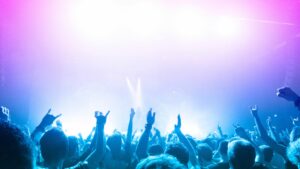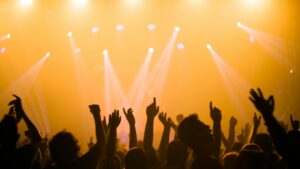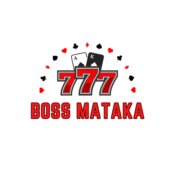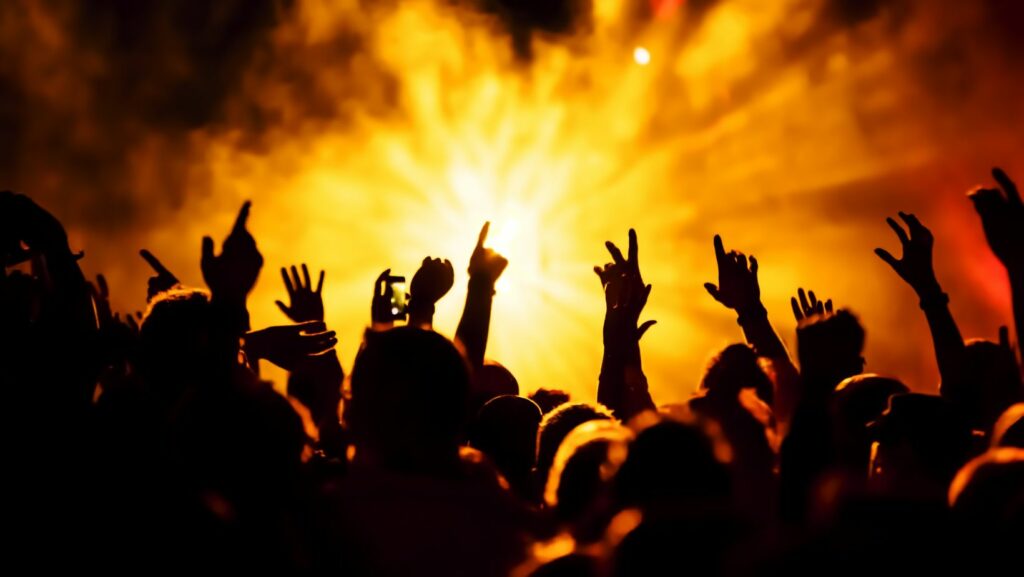Emo music, with its raw expression of emotion and unique punk rock roots, has carved out a niche in the music industry that’s both influential and enduring. It’s no wonder that emo music festivals have become a haven for fans seeking to connect with this powerful genre on a deeper level.
These festivals offer more than just music; they’re a celebration of a unique subculture, a gathering point for those who find solace in the poignant lyrics and intense performances that define emo. Whether you’re a long-time fan or a curious newcomer, emo music festivals provide a fascinating glimpse into a world where music and emotions intersect.
In the following article, we’ll explore the allure of these festivals, highlighting their history, significance, and the unforgettable experiences they offer. Get ready to delve into the heart of emo music, where every chord strikes a chord and every lyric tells a story.
Emo Music Festival
 A dive into emo music’s history reveals its origins and influences, intricately linked with the punk rock scene. This section catalogs its transition into mainstream, becoming an influential genre in the music industry.
A dive into emo music’s history reveals its origins and influences, intricately linked with the punk rock scene. This section catalogs its transition into mainstream, becoming an influential genre in the music industry.
Emo music, short for “emotional,” traces its roots back to the 1980s hardcore punk scene in Washington D.C. It’s primarily recognized as a sub-genre of rock that incorporates elements of punk, indie, and pop music. From its inception, emo music was characterized by its poignant lyrics, showcasing intense emotional expression. Bands like Rites of Spring and Embrace were pioneers, placing emphasis on personal, emotional, and confessional lyrics, a clear departure from the aggression commonly found in punk music.
Around the late 90s and early 2000s, emo music began its transition into mainstream media, with bands such as Jimmy Eat World and Dashboard Confessional gaining commercial success. Their music offered a cathartic experience — their fans found solace and understanding in their explicit expression of inner turmoil and vulnerability.
What Is an Emo Music Festival?
 Emerging from the profound connection fans have with emo music, an Emo Music Festival captures the essence of the genre through live performances and shared experiences in a communal setting. This festival provides a platform for bands and fans to celebrate their love for this unique musical style.
Emerging from the profound connection fans have with emo music, an Emo Music Festival captures the essence of the genre through live performances and shared experiences in a communal setting. This festival provides a platform for bands and fans to celebrate their love for this unique musical style.
Emo Music Festivals exhibit three main characteristics that set them apart: atmosphere, diversity, and presence of fan culture.
- Atmosphere: The festivals are often emotionally charged, with a kind of vulnerability that mirrors the characteristic openness of emo music lyrics. They facilitate a communal experience where fans not only listen to music but also share their emotional responses.
- Diversity: The lineup at these festivals showcases bands from a variety of emo’s sub-genres, such as screamo, pop emo, and emo metal. For instance, an international festival may feature Dashboard Confessional’s emotional acoustic sets alongside My Chemical Romance’s intense rock performances.
These festivals, along with others, further strengthen the emo community worldwide, uniting fans and bands alike.
Attendee Experience at Emo Music Festivals
 Immersing oneself in an emo music festival allows individuals to step into a unique world. This world pulsates with raw emotion and resounds with anthems from both emerging artists and genre-defining bands. Emo music festivals bring together emotional tunes, passionate performances, and loyal fans. The unwavering intensity of the musicians, combined with the resonating lyrics, fills the air. Throughout the festival, one discovers a bustling vendor area flush with artist merchandise and specialty food items. There’s also usually a VIP section that offers exclusive accessibility and premium viewing areas, for those looking to enhance their festival experience. Additionally, many festivals feature meet-and-greets, making room for unforgettable personal encounters between fans and bands. For example, Slam Dunk Festival organizes signing tents wherein the attendees can interact with their favorite artists.
Immersing oneself in an emo music festival allows individuals to step into a unique world. This world pulsates with raw emotion and resounds with anthems from both emerging artists and genre-defining bands. Emo music festivals bring together emotional tunes, passionate performances, and loyal fans. The unwavering intensity of the musicians, combined with the resonating lyrics, fills the air. Throughout the festival, one discovers a bustling vendor area flush with artist merchandise and specialty food items. There’s also usually a VIP section that offers exclusive accessibility and premium viewing areas, for those looking to enhance their festival experience. Additionally, many festivals feature meet-and-greets, making room for unforgettable personal encounters between fans and bands. For example, Slam Dunk Festival organizes signing tents wherein the attendees can interact with their favorite artists.
Emo culture influences the festival fashion style heavily. Attendees often don dark-themed clothing representing the genre’s introspective and emotional nature, typically paired with band tees and accessories like studded belts and wristbands. At the same time, others reflect a more contemporary emo revival style, such as brightly colored hair and neon accents.

